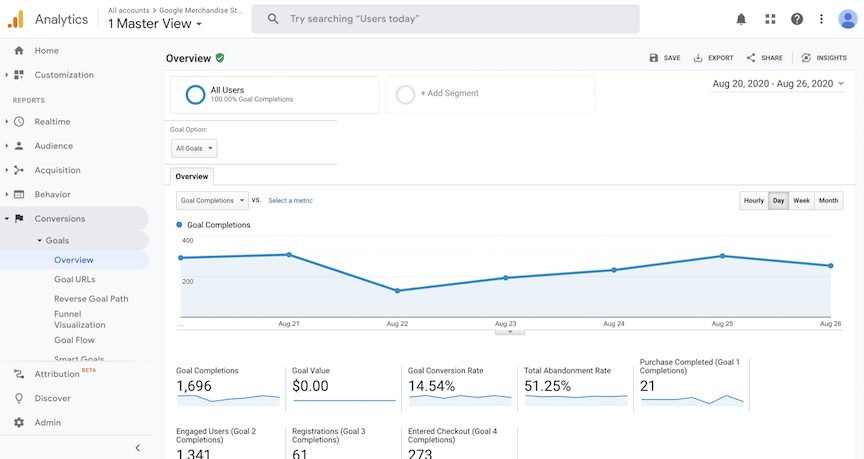-
 11 min. read
11 min. read
-
 Macy Storm
Macy Storm Senior Content Creator
Senior Content Creator
- Macy is a marketing writer with over five years of experience creating content for dozens of industries including food and beverage, home services, and education. She also specializes in creating SEO and PPC content. Her work has been featured by Search Engine Journal, HubSpot, Entrepreneur, Clutch, and more. In her free time, Macy enjoys trying new crafts and reading comic books.
Are you looking to learn how to add search engine optimization (SEO) to your marketing campaign? If so, you’ve come to the right place! Adding SEO to your marketing campaign can be simple if you know how to optimize for it.
On this page, we’ll provide you with eight ways to add elements of an SEO strategy to your marketing campaign. Keep reading to learn more and subscribe to Revenue Weekly for the latest information about SEO.
What is an SEO strategy?
An SEO strategy is made up of tactics that optimize your website so you can rank higher in search results. Ranking higher in search results enables you to drive more organic traffic to your page, which results in more leads and conversions.
Your SEO strategy consists of three types of SEO:
- On-page SEO: On-page SEO focuses on optimizations you can do on your site. These optimizations include tactics like integrating keywords and optimizing for user-friendliness. You make changes on your pages that help improve your site’s ranking in the search results.
- Off-page SEO: Off-page SEO focuses on factors that are off your site, and you can’t control, but influence your site’s ranking in the search results. The most significant off-page SEO factor is backlinks. Backlinks help improve your site’s credibility and drive traffic, which can help you improve your ranking.
- Technical SEO: Technical SEO involves optimizing the backend of your site to help you perform better in search results. The most common tactic associated with technical SEO is page speed optimization. Improving the backend of your website provides a better user experience, which keeps leads on your page longer and increases ranking.
An SEO strategy is an excellent way for your business to drive more traffic and leads to your website.
How to add SEO to your marketing campaign
The best way to add SEO to your marketing campaign is to take steps to optimize for search engines. Let’s look at seven ways you can add SEO to your marketing campaign.
1. Establish your target audience
If you want to create an SEO plan that works for your audience, you need to start by establishing your target audience. You need to know your target audience so you can effectively reach them in search results. Your target audience contains people that have an interest in your products or services.
You can establish your target audience by defining characteristics like:
- Age
- Gender
- Ethnicity
- Socioeconomic status
- Occupation
- Hobbies
- Interests
- Buying habits
- And more
Look at your typical customer and use these characteristics to define them. By knowing this information, you can optimize your SEO campaign to fit your audience’s needs better.
2. Make a list of relevant keywords
Keyword selection is an integral part of how to start SEO. When users search, they use keywords to generate search results. If you want your business to appear in front of those leads, you need to choose the right keywords to help you rank in relevant results.
You’ll want to integrate keywords on to your main pages, blog pages, and more. If you’re going to drive the right traffic, you need to use the right keywords for your page. To find relevant keywords, conduct keyword research.
There are numerous keyword research tools you can use, like Buzzsumo or KeywordsFX, to help you find applicable key terms. These tools will help you generate a list of terms you can integrate into your site.
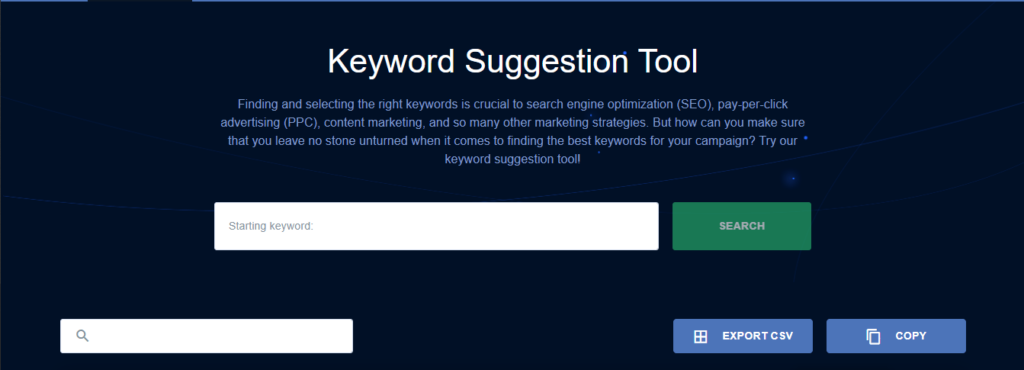
As you conduct keyword research, you’ll want to focus on long-tail keywords. Long-tail keywords contain three or more words, like “how to build credit.” Typically, these key phrases are better for your SEO campaign because they drive more specific traffic that you know is likely to have an interest in your business.
For example, if someone just searches “credit,” it’s difficult to know what they want to find. That person could wish to find out what credit is, how to build it, or what a credit card is. It’s not clear what the search intent is, so if you tried to rank for this keyword only, you might not drive the most relevant traffic.
A keyword like “how to build credit,” on the other hand, signifies user intent. Someone searching for this term wants to know how they can build credit. If you were a company like Credit Karma, this would be a great keyword to target and drive in relevant traffic.
If you want to create an SEO plan that works, start by researching and finding relevant keywords to integrate on your site.
3. Invest in creating content
If you want to know how to add SEO to your marketing campaign, you can start by investing in creating content. Content plays a pivotal role in helping you rank in search results where your leads are looking for information. To get started with creating content, you need to find topics to cover.
You’ll want to generate a list of topic ideas and then conduct a search on Google to see what people write about that topic. It will help you get a plan for the format of your article and what to cover within the subject. So, if we go back to the example of “how to build credit,” you’ll find that the results map out how to build credit through different means, like with or without a credit card.
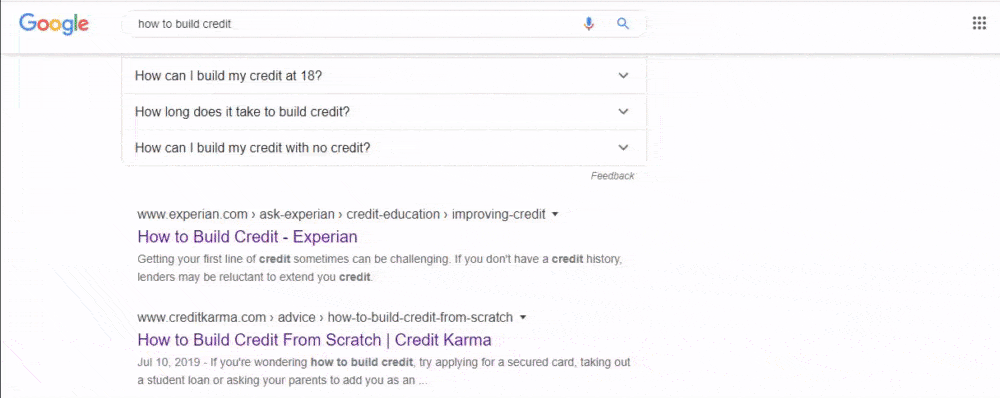
By looking at the content that’s already in the search results, you can get an idea for how to format your content and what information is essential to searchers.
When you create content, it’s best to focus on creating high-quality content that matches the user search intent. While you do need to post content often, it’s vital that your content also provides your audience with all the information you need. If you’re posting content often, but it doesn’t have enough information, you’re not going to have a successful SEO strategy.
A successful SEO strategy requires creating high-quality content often. By creating relevant content often, you’ll create an SEO plan that drives results for your business.
4. Create a link building plan
To add SEO to your marketing campaign, you need to create a link building plan. Link building plays a critical role in helping you reach leads in the search results. When you create a link building plan, you must focus on building two types of links:
- Backlinks: Backlinks are links to your site from other credible sites. These links are essential because they help drive traffic and build your website’s authority and trust. You can earn backlinks by creating high-quality content that authoritative sites want to link to from their site.
- Internal links: Internal links are links on your pages to other pages within your website. Internal links help keep leads on your site longer. Extended time spent on your site sends a positive signal to search engines that your page is relevant, which will lead to higher rankings.
You need to create a link building plan in your SEO strategy so you can improve your ranking and drive more traffic to your page. So, how do you earn backlinks? With backlinks, you’ll want to start by creating quality content.
When you have quality content, you can reach out to industry authorities, like bloggers, and ask them to check it out. If they like what they see, they may link to it on their site. As for internal links, you can build them by adding them to different pages on your site.
If you mention relevant terms on the page, you can link to other pages on your website to drive traffic to those pages. So, for example, if you had a page about what a good credit score is and you mention good credit scores on your page about how to build credit, you could link to the former page on the latter. Here’s an example where the bolded part represents the link placement: “As you learn how to build credit, it’s important to know what a good credit score is, so you know what to work towards achieving.” By earning backlinks and building internal links, you’ll create an SEO plan that drives results for your business.
5. Make sure your site loads fast
If you want to know how to add SEO to your marketing campaign, start by optimizing your website for search engines. A critical component of ranking in search results is having a fast loading website. Users don’t want to wait to get answers to their questions.
If your site loads to quickly, they’ll bounce from your page and visit a competitor’s site instead. To keep these leads on your page, you need to ensure your site loads quickly. You can check your site’s current load time by using Google PageSpeed Insights.
This tool enables you to see how quickly your site loads on desktop and mobile.
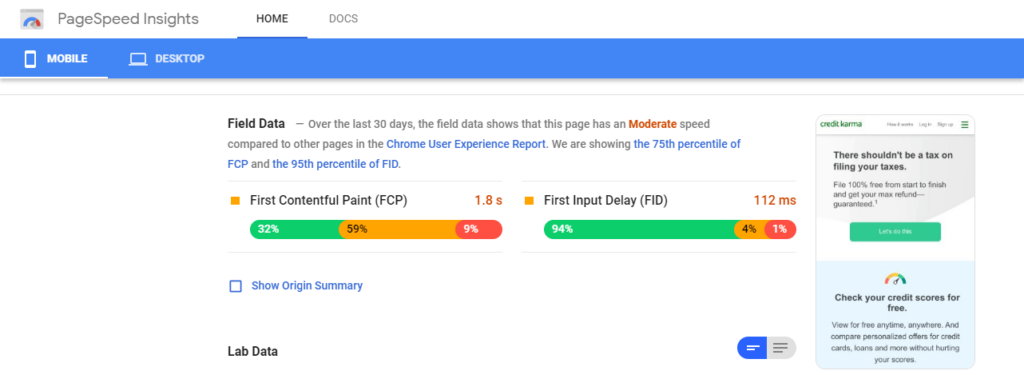
You can follow Google’s suggestions on how to improve your site’s load time. If you’re too busy running your business to improve your site’s load time, you can invest in page speed services, so you don’t miss out on optimizing your site to drive valuable traffic. By improving your site’s load time, you’ll create an SEO plan that drives success for your business.
6. Adapt for mobile
When you learn how to start SEO, you’ll discover that mobile is a critical component of your strategy. Since Google implemented its mobile-first indexing, it’s vital now more than ever that you optimize for mobile searchers. If you want to add SEO to your marketing campaign, you need to adapt to mobile.
You can start adapting for mobile by integrating responsive design. Responsive design enables your site to adapt to whatever device a user uses. So, if someone accesses your site on mobile, they’ll get a version of your website that’s scaled to use on their phone.
With responsive design, someone will have to try accessing the desktop version of your site on their small, handheld device. It will lead to a negative user experience, which deters leads from your page. When you use responsive design, you’ll want to ensure you’re integrating mobile-friendly elements.
Thumb-friendly elements are a critical component of mobile-friendly design. Considering that most people use their thumb to scroll, you need to make it easy for people to reach essential parts of your site, like the menu button, with their thumb. By adapting for mobile, you’ll provide your audience with a better experience, which will keep them engaged on your site longer.
A mobile-friendly website will help you rank better in the search results so you can drive leads to your page.
7. Make your site user-friendly
One of the ways to add SEO to your marketing campaign is to make a user-friendly website. User-friendly websites are important to SEO in digital marketing because it determines how long someone will remain on your page. If someone visits your website and can’t find the information they need or can’t navigate your website, they’ll leave your page.
You’ll miss out on leads, and they’ll bounce back to the search results to visit a competitor’s site. To keep leads on your site, make sure your website is user-friendly. Some user-friendly elements include:
- Simple and organized navigation
- Images and video to break up the text
- Text in paragraphs of 2-3 sentences to make reading easy
- Call to action (CTA) buttons that stand out on the page
- Contact information present on every page (header, footer)
These are just a few ways you can make your site more user-friendly for your audience. By making your website more user-friendly, you’ll build a better SEO strategy for your business.
Start using SEO to drive better traffic for your business today
Now that you know how to add SEO to your marketing campaign, you can start using this strategy to grow your business. SEO will help you boost traffic on your site and earn more valuable leads for your business.
At WebFX, we have over a decade of experience creating SEO campaigns that drive results. Give us a call today at 888-601-5359 (or contact us online) to learn more about our SEO packages.
-
 Macy is a marketing writer with over five years of experience creating content for dozens of industries including food and beverage, home services, and education. She also specializes in creating SEO and PPC content. Her work has been featured by Search Engine Journal, HubSpot, Entrepreneur, Clutch, and more. In her free time, Macy enjoys trying new crafts and reading comic books.
Macy is a marketing writer with over five years of experience creating content for dozens of industries including food and beverage, home services, and education. She also specializes in creating SEO and PPC content. Her work has been featured by Search Engine Journal, HubSpot, Entrepreneur, Clutch, and more. In her free time, Macy enjoys trying new crafts and reading comic books. -

WebFX is a full-service marketing agency with 1,100+ client reviews and a 4.9-star rating on Clutch! Find out how our expert team and revenue-accelerating tech can drive results for you! Learn more
Try our new free SEO checker at SEO.com
Boost your site’s search performance with our free SEO Checker. Analyze your website for optimization tips on titles, headers, content, speed, and more.
Get your Free SEO report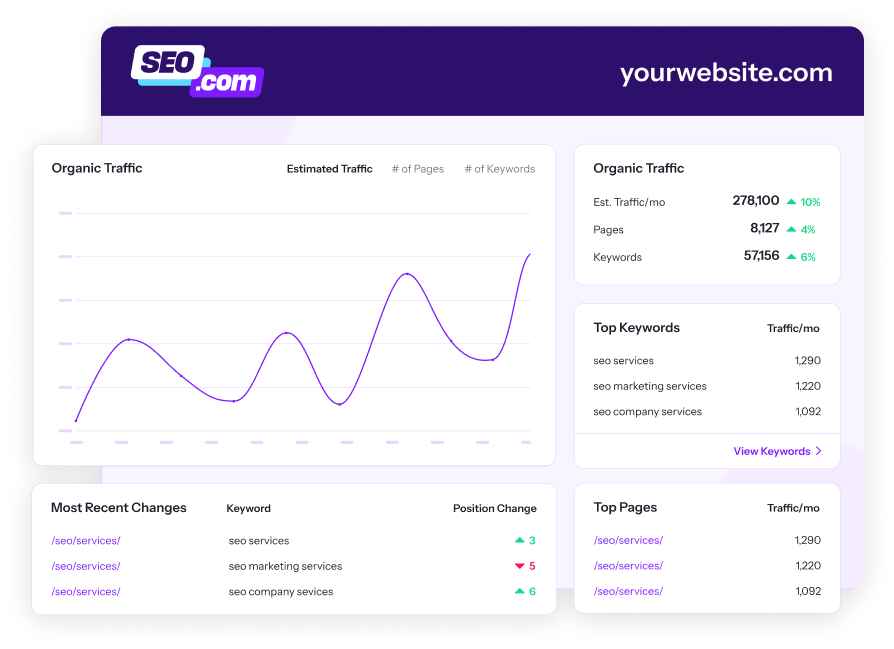
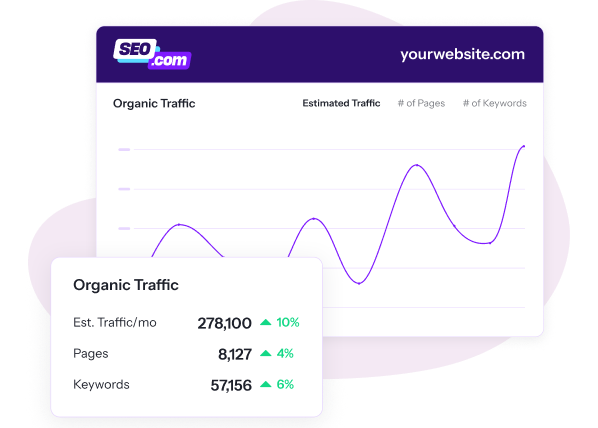
Optimize Your Website Faster with SEO.com
Effortlessly find opportunities and monitor performance with this user-friendly tool designed by the SEO experts at WebFX!
Try it for FreeTry our new free SEO checker at SEO.com
Boost your site’s search performance with our free SEO Checker. Analyze your website for optimization tips on titles, headers, content, speed, and more.
Get your Free SEO report


